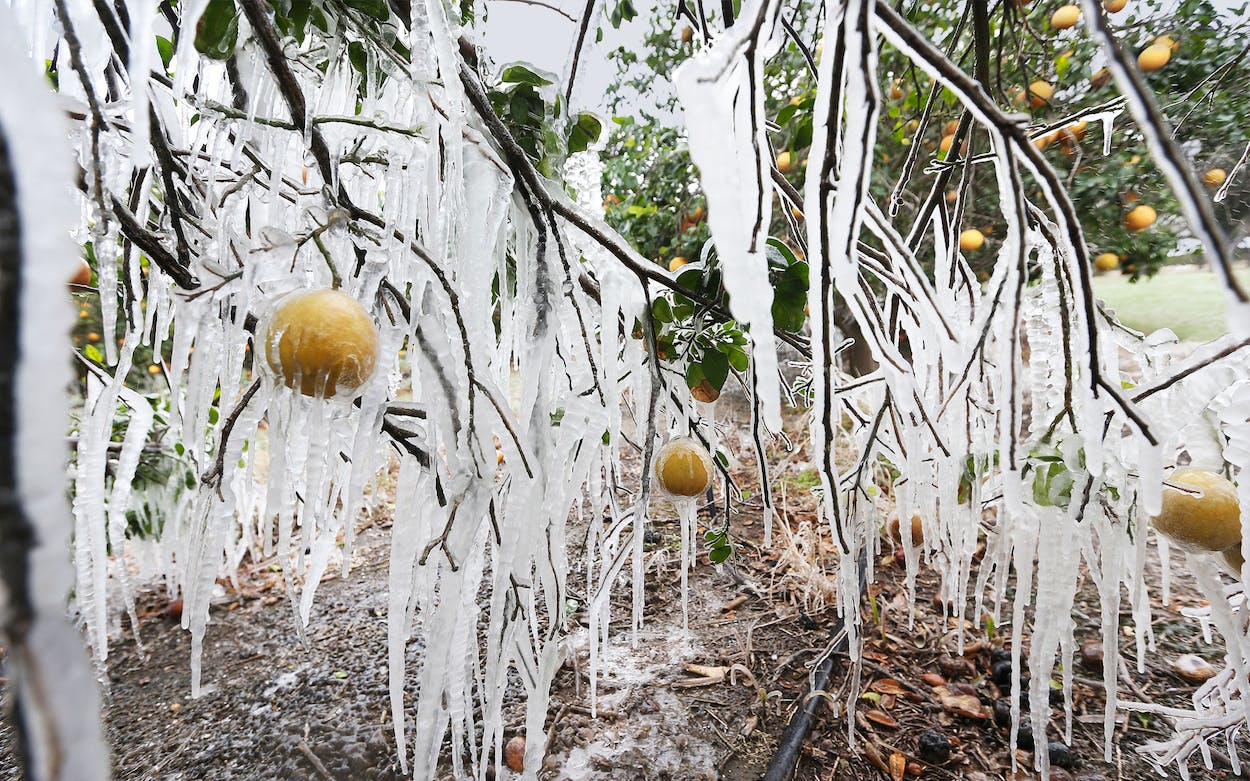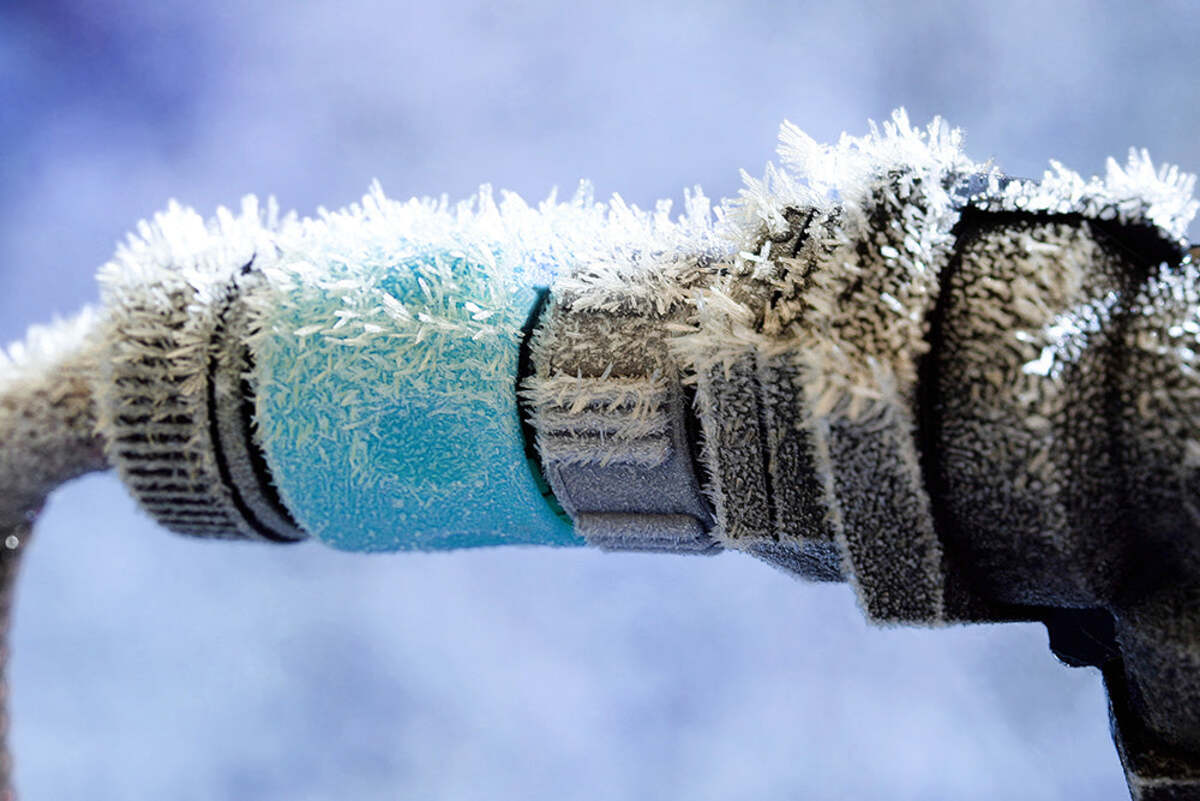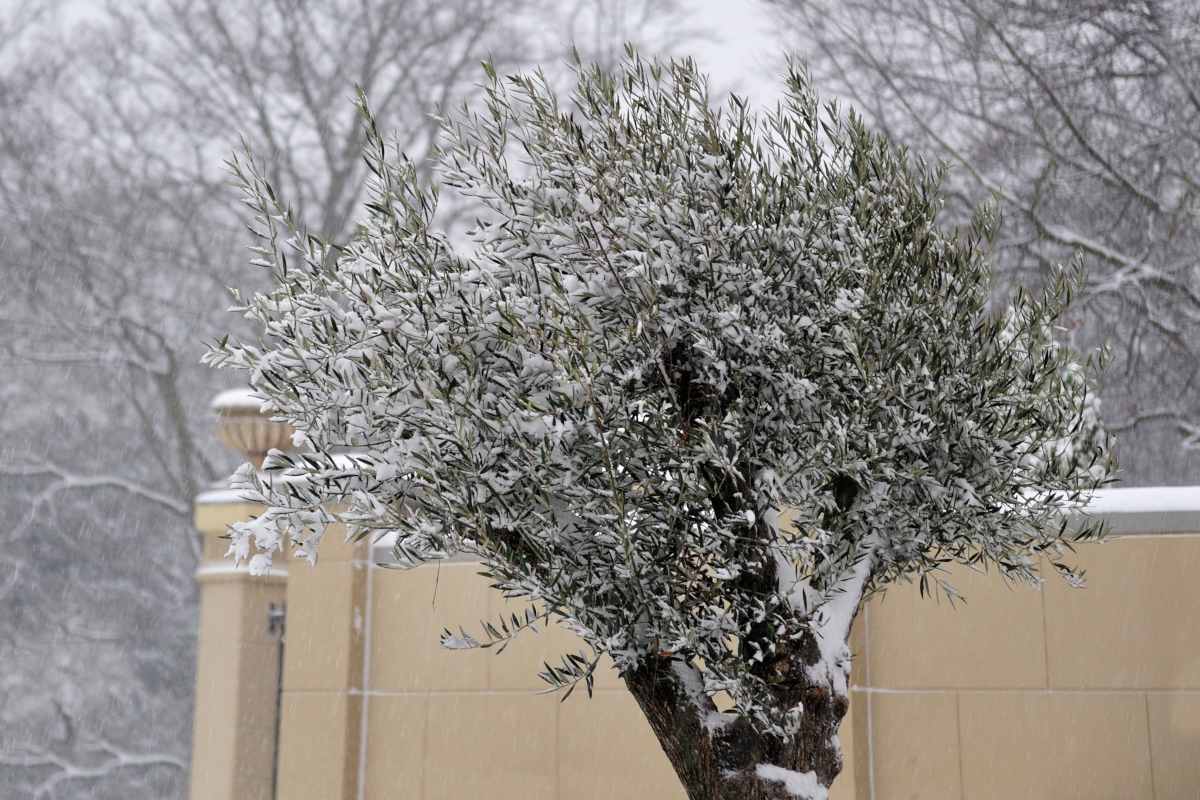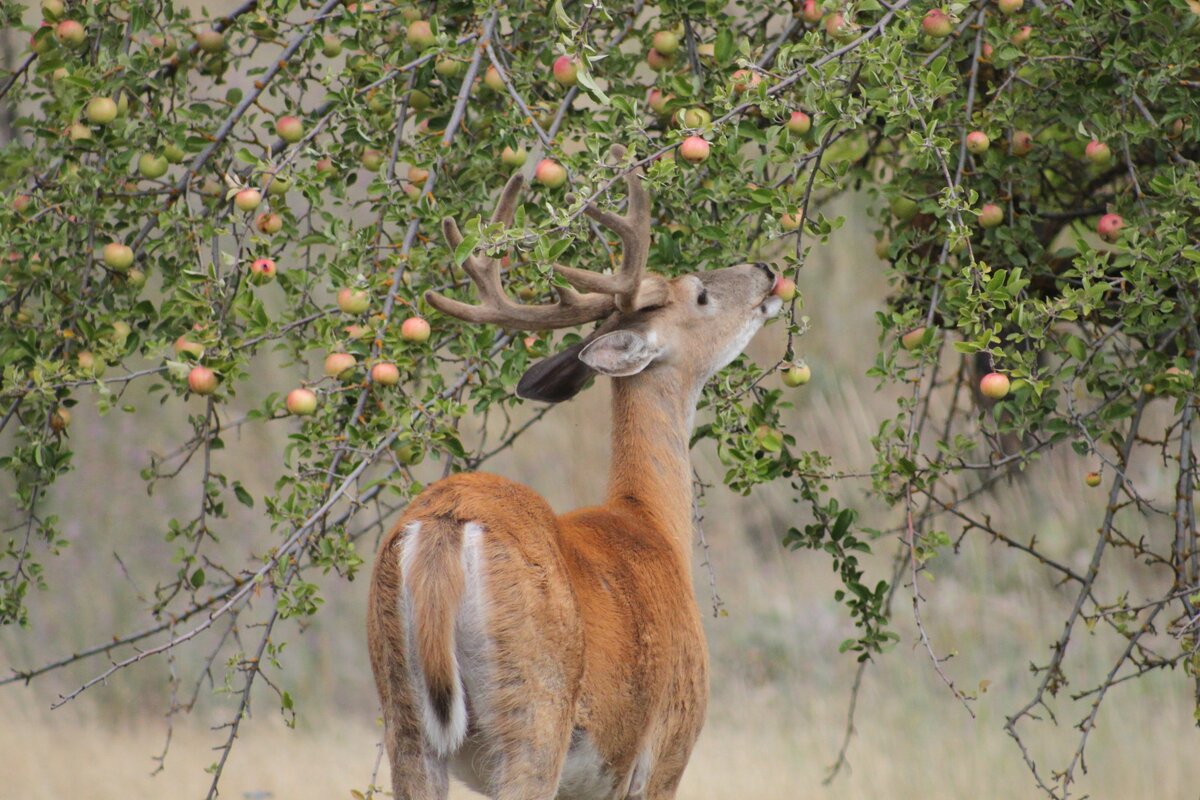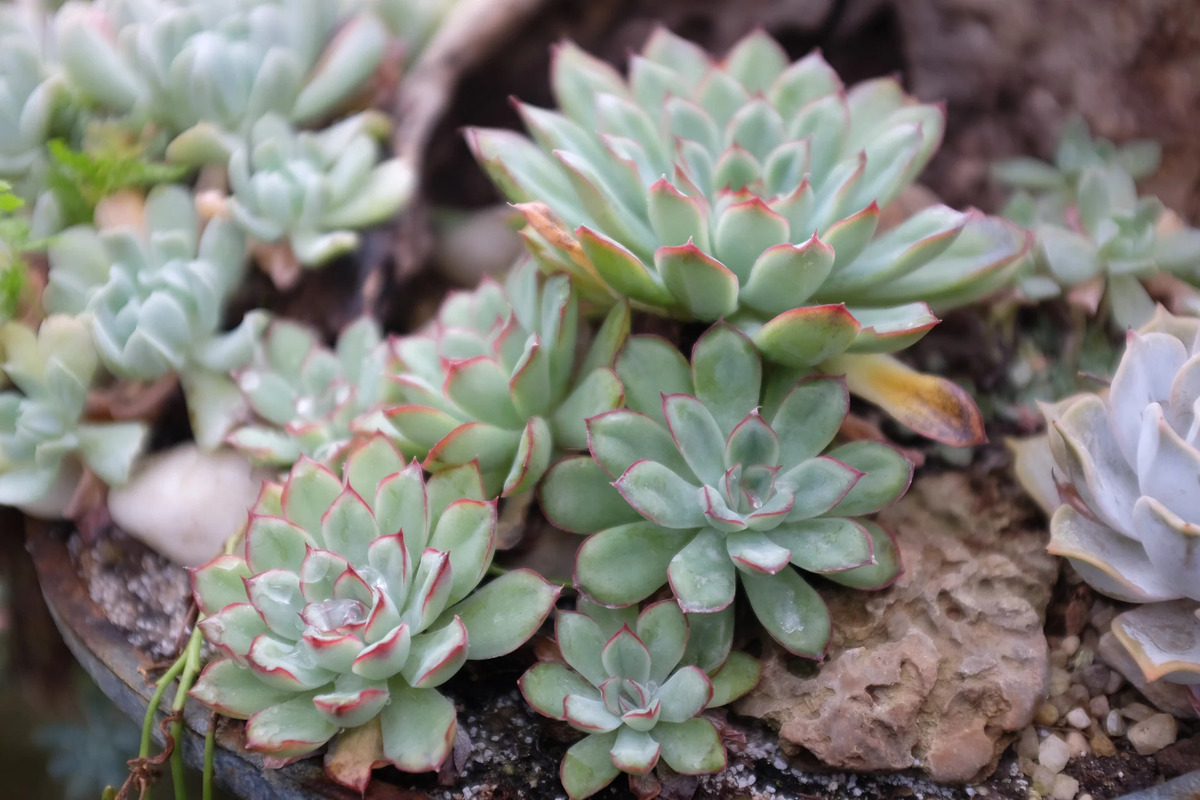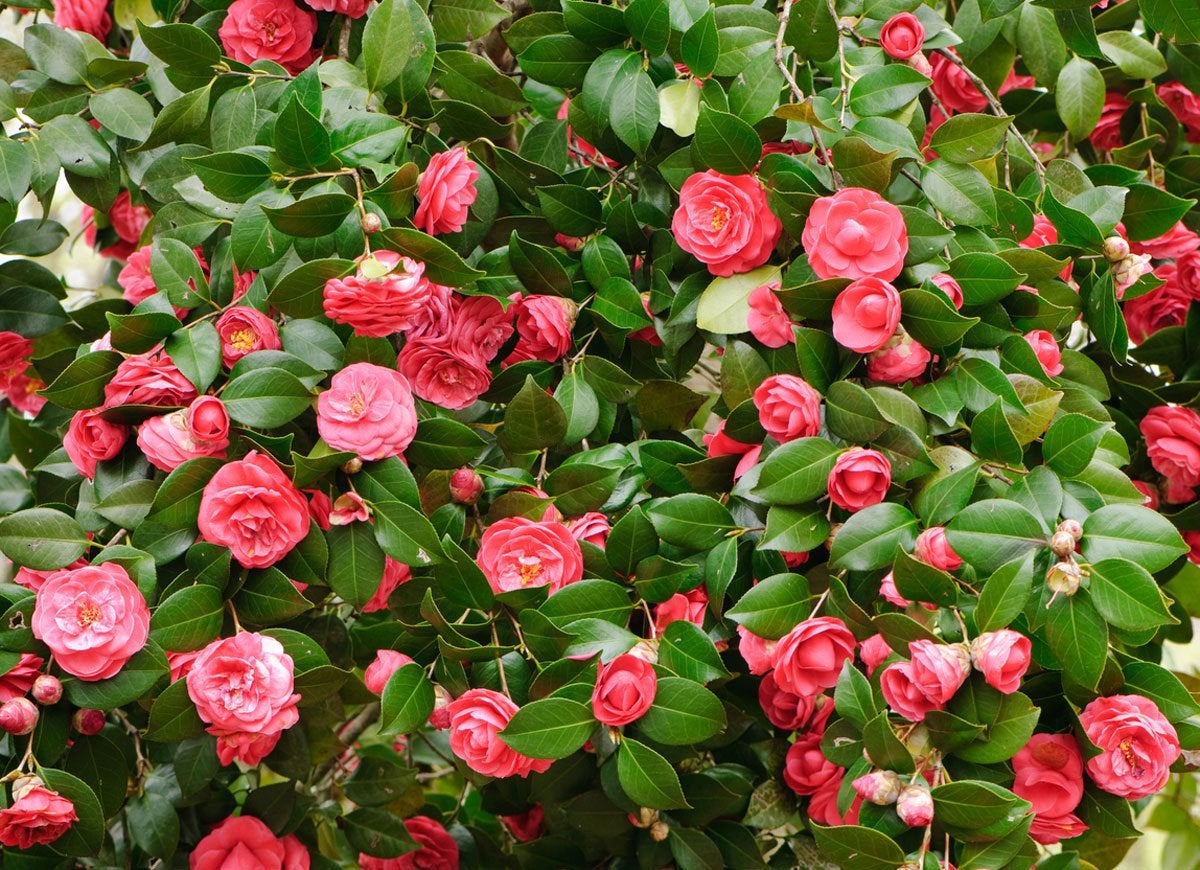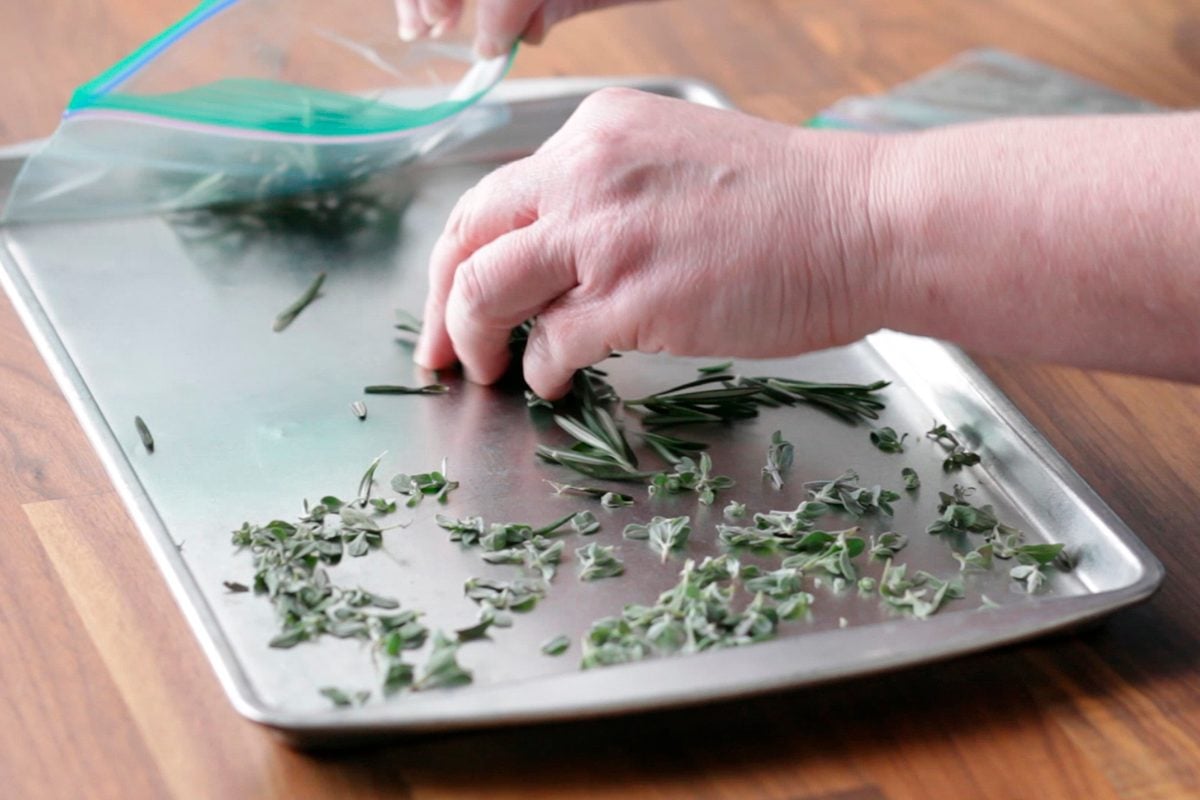Home>Gardening Techniques>Plant Care>How To Protect Shrubs From Winter Freezing
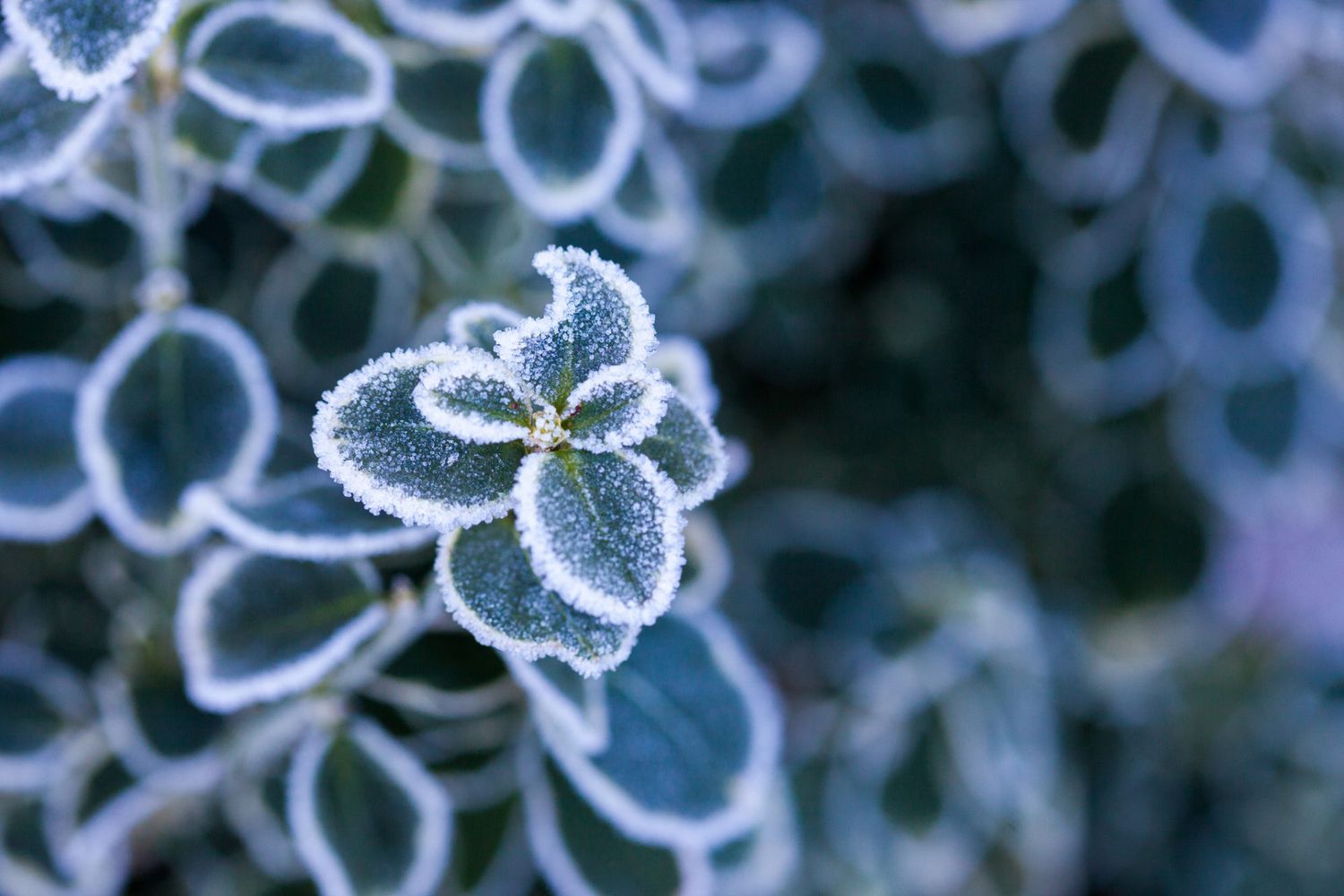

Plant Care
How To Protect Shrubs From Winter Freezing
Modified: January 22, 2024
Learn the best plant care techniques to protect your shrubs from winter freezing. Keep your plants healthy and thriving throughout the cold season with these helpful tips.
(Many of the links in this article redirect to a specific reviewed product. Your purchase of these products through affiliate links helps to generate commission for Chicagolandgardening.com, at no extra cost. Learn more)
Table of Contents
- Introduction
- Understanding the Effects of Winter Freezing on Shrubs
- Selecting Cold Hardy Shrubs
- Preparing Shrubs for Winter
- Mulching Techniques for Frost Protection
- Wrapping Shrubs with Burlap
- Using Protective Covers for Small Shrubs
- Watering Strategies to Prevent Winter Burn
- Pruning Practices to Protect Shrubs from Freezing
- Conclusion
Introduction
Winter can be a challenging time for shrubs, as freezing temperatures and harsh weather conditions can cause damage and even death to these plants. As a plant enthusiast and gardener, it’s crucial to understand how to protect your shrubs from winter freezing to ensure their health and vitality.
During winter, shrubs are exposed to cold winds, frost, and freezing temperatures, which can lead to dehydration, desiccation, and tissue damage. These conditions can weaken the plants, making them susceptible to diseases and pests. However, with proper care and precautions, you can safeguard your shrubs and help them thrive through the cold winter months.
This article will guide you through various techniques and strategies to protect your shrubs from winter freezing. From selecting cold-hardy shrubs to implementing mulching, wrapping, and watering techniques, you will learn how to minimize the risk of damage and maintain your shrubs’ health and beauty throughout the winter season.
Understanding the Effects of Winter Freezing on Shrubs
Winter freezing can have damaging effects on shrubs if they are not properly protected. It’s important to understand these effects to comprehend why it is crucial to take preventive measures.
Extreme cold temperatures can cause freezing of plant tissues, leading to cell damage and death. Ice crystals form within the cells, rupturing cell walls and disrupting essential physiological processes. This damage can weaken the shrub’s overall structure and make it more susceptible to diseases and pest infestations.
In addition to direct tissue damage, freezing temperatures can also lead to desiccation or drying out of the plant. The cold winds and low humidity levels during winter can cause excessive water loss from the plant’s leaves and stems. This can result in wilting, browning of foliage, and even death if the shrub becomes excessively dehydrated.
Frost is another significant concern during the winter months. Frost occurs when the temperature drops below freezing, causing the moisture in the air to condense and freeze on the surfaces of plants. The formation of frost on a shrub can lead to severe tissue damage, especially when the ice crystals melt and refreeze repeatedly.
Furthermore, fluctuating temperatures during winter, with warm periods followed by sudden drops in temperature, can be detrimental to shrubs. This freeze-thaw cycle can cause the expansion and contraction of plant tissues, leading to physical damage and weakening of the shrub’s structure.
Understanding the effects of winter freezing on shrubs highlights the importance of implementing protective measures. By taking proactive steps to shield your shrubs from freezing temperatures, you can prevent or minimize the damage caused by these harsh winter conditions.
Selecting Cold Hardy Shrubs
When it comes to protecting shrubs from winter freezing, selecting cold-hardy varieties is a crucial first step. Cold hardiness refers to a plant’s ability to withstand freezing temperatures without significant damage.
Before choosing shrubs for your garden, consider the hardiness zone of your region. Hardiness zones are based on the average minimum winter temperatures and can help you determine which plants are most likely to thrive in your area. Consult a hardiness zone map to identify the suitable plants for your region.
Look for shrubs that are specifically labeled as cold hardy or recommended for your particular hardiness zone. These shrubs are genetically adapted to withstand freezing temperatures and are more resilient in harsh winter conditions.
Some popular cold-hardy shrubs include the evergreen boxwood, which can withstand freezing temperatures and maintain its foliage throughout winter, and the winterberry holly, known for its vibrant red berries that persist throughout the winter months.
When selecting cold-hardy shrubs, consider factors such as the growth habits, size, and their specific tolerance to your region’s winter conditions. Some shrubs may tolerate cold temperatures but require protection from harsh winds or excessive moisture. Understanding the specific needs of the shrubs will help you make informed decisions and ensure their survival during winter.
Additionally, consider the soil conditions in your garden. Some shrubs may be more tolerant of specific soil types, such as sandy or clay soils, which can influence their ability to withstand freezing temperatures. Conduct a soil analysis or consult with a local gardening expert to determine the suitability of shrubs for your soil type.
By selecting cold-hardy shrubs that are well-suited to your region’s winter conditions, you lay the foundation for a successful winter garden. These resilient plants will have a greater chance of surviving and thriving through freezing temperatures, providing beauty and interest to your landscape throughout the winter season.
Preparing Shrubs for Winter
Preparing your shrubs for winter is essential to ensure their health and survival during the cold months. Taking the time to properly prepare your shrubs can significantly reduce the risk of damage caused by freezing temperatures, frost, and other winter conditions.
One of the key steps in preparing shrubs for winter is to thoroughly water them before the ground freezes. Well-hydrated shrubs are better equipped to withstand winter dehydration and are less susceptible to winter burn. Water the shrubs deeply a few days before the first expected freeze to ensure they have adequate moisture to carry them through the dormant period.
In addition to watering, ensure that the shrubs are in their best possible condition by pruning away any dead, damaged, or diseased branches. This will promote healthy growth and minimize the risk of pest and disease issues during winter. However, avoid heavy pruning in late fall, as it may stimulate new growth that is vulnerable to winter damage.
Another important step is to provide a layer of organic mulch around the base of the shrubs. Mulch acts as insulation, protecting the roots from extreme temperature fluctuations and helping to retain moisture in the soil. Apply a layer of mulch, such as wood chips or straw, to a depth of 2-3 inches, being careful to keep the mulch away from the base of the shrub to prevent rot.
Wrapping the shrubs with burlap or breathable fabric can provide additional protection from drying winds and frost. This technique is particularly helpful for evergreen shrubs that are prone to desiccation. Wrap the shrubs loosely with the fabric, allowing for air circulation and sunlight penetration while protecting against winter damage. Secure the fabric with twine or clips, ensuring it does not come loose during winter storms.
Lastly, monitor the shrubs throughout the winter and remove any heavy snow loads that may accumulate on the branches. Heavy snow can weigh down the branches, causing them to break or bend. Use a broom or gentle shaking to remove the snow, taking care not to damage the shrub in the process.
By following these steps and properly preparing your shrubs for winter, you can effectively reduce the risk of damage and ensure the health and survival of your plants. Remember that each shrub species may have specific requirements and considerations, so always research and adapt your preparations accordingly.
Mulching Techniques for Frost Protection
Mulching is a highly effective technique for protecting shrubs from frost damage during winter. By providing an insulating layer of organic material, mulch helps regulate soil temperature, retain moisture, and shield the shrub’s roots from freezing temperatures.
When selecting mulch for frost protection, opt for materials such as straw, wood chips, or shredded leaves. These organic materials offer excellent insulation and allow for air circulation around the shrub’s base.
To apply mulch, start by clearing away any debris and weeds from the area around the shrub. Apply a layer of mulch to a depth of 2-3 inches, taking care to create a circle around the shrub’s base that extends beyond its drip line. This mulch layer will act as a barrier, insulating the soil and protecting the roots from freezing temperatures.
It’s important to leave a small gap between the mulch and the base of the shrub to prevent moisture buildup and potential rot. This gap will also discourage rodents and pests from nesting near the base of the plant.
In areas with colder winters, consider using additional mulch materials such as straw or hay to create a temporary protective cover for the shrubs. Once winter arrives, mound the mulch around the shrub’s base and lower branches, providing extra insulation to shield against frost damage.
Remember to monitor the moisture levels in the soil throughout winter. If the soil becomes excessively dry, add a light layer of mulch to help retain moisture and prevent winter desiccation.
In early spring, once the threat of frost has passed, gradually remove the mulch from around the shrub. This will allow the soil to warm up, encouraging new growth without the risk of smothering the plant or creating a haven for pests and diseases.
By utilizing mulching techniques for frost protection, you provide a vital layer of insulation that shields your shrubs from the freezing temperatures and potential damage caused by frost. Mulching is a simple and effective method to safeguard your plants and promote their healthy growth and development throughout the winter season.
Wrapping Shrubs with Burlap
Wrapping shrubs with burlap is a popular and effective method to protect them from the harsh winter elements, including freezing temperatures and drying winds. This technique is particularly beneficial for vulnerable evergreen shrubs and young plants that are more susceptible to winter damage.
Before wrapping, ensure that the shrub is properly hydrated and has been pruned to remove any dead or damaged branches. This will help to maintain its health and prevent the spread of diseases or pests during winter.
To begin, gather your materials, including burlap, twine, and stakes if necessary. Burlap can be purchased at gardening stores or obtained from local nurseries. Cut the burlap into suitable lengths, ensuring it is large enough to completely cover the shrub.
Start wrapping the shrub from the bottom, working your way up towards the top. Wrap the burlap tightly but not too snugly around the shrub, leaving enough space for air circulation. Be cautious not to damage any branches in the process.
Secure the burlap using twine or rope, tying it loosely to prevent constriction and allow for movement. Ensure that the top of the shrub is covered and that the burlap reaches the ground to protect the lower branches and foliage.
If the shrub is tall or in an area exposed to strong winds, consider using stakes to support the burlap and prevent it from blowing away. This additional support will provide stability and keep the burlap securely in place.
It’s important to check the shrubs periodically throughout winter to ensure that the burlap is still intact and properly protecting the shrub. If the burlap becomes damaged or wet, replace it promptly to maintain the shrub’s protection.
In early spring, as the weather begins to warm, gradually remove the burlap from the shrub. Start by loosening the twine and unwrapping the burlap from the top, working your way down. This gradual removal allows the shrub to acclimate to the new season without the risk of shocking it with sudden exposure.
Wrapping shrubs with burlap provides a physical barrier that shields them from harsh winter conditions. By protecting against freezing temperatures, drying winds, and even snow and ice, burlap wrapping helps preserve the health and beauty of your shrubs, ensuring their vitality for the upcoming growing season.
Using Protective Covers for Small Shrubs
Small shrubs are particularly vulnerable to winter damage due to their size and limited foliage. However, by utilizing protective covers, you can safeguard these delicate plants from freezing temperatures, frost, and other winter hazards.
Protective covers come in various forms, including specialized plant covers, cloths, and even homemade structures. These covers act as a barrier, providing insulation and shielding the shrubs from harsh winter conditions.
When selecting protective covers for small shrubs, consider the size and shape of the plant. Look for covers that are spacious enough to accommodate the shrub while providing sufficient airflow. It’s important to avoid tightly enclosing the plant, as this can create a moist environment conducive to fungal diseases.
Specialized plant covers, often made of breathable fabric, are designed specifically for winter protection. They allow air and light to penetrate while keeping the shrub insulated. These covers are easy to install and can be secured with stakes or weights to prevent them from blowing away.
If specialized covers are not available, you can also use burlap or frost blankets to create a protective barrier. These materials provide insulation and allow for air circulation. Wrap the small shrub loosely with the chosen cover, ensuring that it reaches the ground and offers adequate protection for the foliage and branches.
For added insulation and protection, consider creating a homemade structure using stakes and plastic sheeting. Construct a frame around the shrub using the stakes and drape the plastic sheeting securely over it. This DIY cover provides a layer of shelter and insulation from freezing temperatures and frost.
Regardless of the type of protective cover you choose, it’s essential to monitor the shrub regularly. Check for any signs of moisture buildup or damage and make adjustments as necessary. Remove coverings during mild weather to allow for air circulation and prevent overheating.
As spring approaches and the danger of frost subsides, gradually remove the covers during the day to expose the shrub to sunlight. This will help the plant acclimate to the changing temperatures and prevent it from becoming dependent on the protective cover.
Using protective covers for small shrubs is an effective way to shield them from freezing temperatures, frost, and other winter threats. By providing insulation and creating a microclimate around the plants, these covers help ensure the survival and health of your small shrubs throughout the winter season.
Watering Strategies to Prevent Winter Burn
Proper watering is essential for preventing winter burn, a condition where shrubs experience dehydration and damage due to the cold and dry winter air. Implementing effective watering strategies can help maintain the moisture levels necessary for the shrubs’ survival during the winter months.
Before the ground freezes, provide the shrubs with a thorough watering. This helps ensure the roots are adequately hydrated and prepared for the dormant period. Water deeply, aiming for the root zone, rather than surface watering, which may only moisten the top layer of soil.
Make sure to time your watering appropriately. Water the shrubs when the temperatures are above freezing, and there is no immediate threat of frost or freezing. Avoid watering during freezing temperatures, as it can lead to ice formation and damage the shrub’s cells.
During winter, monitor the moisture levels in the soil. If there hasn’t been enough rain or snow, supplement the shrubs’ water needs by providing occasional deep watering. This is especially important when there are extended dry spells or if the shrubs are located in areas sheltered from natural precipitation.
However, be cautious not to overwater the shrubs. Waterlogged soil can lead to root rot and other fungal diseases. Ensure that the soil has proper drainage and that excess water can freely drain away.
Consider using a soaker hose or drip irrigation system for efficient and targeted watering. These methods deliver water directly to the soil, minimizing water loss through evaporation or runoff. Place the hose or irrigation system near the base of the shrubs, directing the water toward the roots.
Another effective watering strategy is to apply a layer of organic mulch around the shrubs. Mulch helps retain moisture in the soil, reducing evaporation and slowing down the rate at which the soil dries out. This aids in maintaining consistent soil moisture levels and preventing winter burn.
Regularly monitor the shrubs and observe their foliage for signs of winter burn, such as wilting or browning. If you notice any signs of dehydration or damage, provide additional water as needed to help revive the shrubs.
By implementing proper watering strategies and ensuring that the shrubs receive adequate moisture throughout the winter, you can minimize the risk of winter burn and help the plants survive the harsh conditions. Remember that each shrub may have different water requirements, so monitoring their specific needs is essential for their overall health and well-being.
Pruning Practices to Protect Shrubs from Freezing
Proper pruning practices play a crucial role in protecting shrubs from freezing temperatures and winter damage. Pruning helps maintain the overall health and structure of the shrub while reducing the risk of snow and ice accumulation, which can lead to breakage or bending of branches.
One essential pruning practice is to remove any dead, damaged, or diseased branches. These branches are more susceptible to winter damage and can serve as an entry point for pests and diseases. Pruning them away promotes the overall health and vitality of the shrub.
It’s important to avoid heavy pruning of shrubs in late fall. Pruning stimulates new growth, which is more vulnerable to freezing temperatures and winter damage. Instead, focus on light maintenance pruning, removing only necessary branches to maintain a balanced and healthy structure.
Thinning out the canopy of the shrub can help prevent snow and ice buildup. Prune away crossing branches, inward-growing branches, or any branches that are congesting the canopy of the shrub. This opens up the shrub, improving air circulation and reducing the risk of snow accumulation.
Consider the specific growth habits of the shrub when pruning. Some shrubs naturally grow in a more compact or upright form, which can make them more susceptible to snow and ice damage. Pruning these shrubs to encourage a more spreading or horizontal growth pattern can help distribute the weight of snow and ice more evenly.
Prune the shrub in a way that maintains its natural shape and beauty. Avoid drastic or excessive pruning, as this can weaken the shrub and make it more susceptible to stress and winter damage. Instead, aim for a balanced and proportionate shape that allows for airflow and minimizes the risk of snow accumulation.
Timing is key when it comes to pruning shrubs for winter protection. Typically, it’s best to prune shrubs in late winter or early spring, before new growth begins. However, if there are specific dead or damaged branches that need to be removed to prevent further damage during winter, you can prune those at any time.
By implementing proper pruning practices, you can enhance the resilience of your shrubs and protect them from the effects of freezing temperatures. Regular pruning helps maintain a healthy structure, reduces the risk of snow and ice damage, and promotes the overall health and beauty of your shrubs.
Conclusion
Protecting shrubs from winter freezing is a crucial aspect of plant care that ensures their health and vitality throughout the cold season. By understanding the effects of winter freezing on shrubs and implementing proper strategies, you can successfully shield your plants from damage and promote their overall well-being.
Selecting cold-hardy shrubs that are well-suited to your region’s winter conditions is the first step towards winter protection. These resilient plants have a better chance of withstanding freezing temperatures and harsh weather.
Preparing shrubs for winter by pruning, watering adequately, and applying mulch sets the foundation for a successful winter garden. Pruning promotes plant health and structure, proper watering prevents dehydration, and mulching provides insulation and moisture retention.
Using protective covers, such as burlap or specialized plant covers, ensures the safety of small shrubs against freezing temperatures and frost. Creating a physical barrier helps maintain a more suitable microclimate for the plants.
Pruning practices and proper timing of pruning help protect shrubs from winter damage. Removing dead or damaged branches, thinning out the canopy, and considering growth habits can prevent snow and ice accumulation and enhance shrubs’ resilience.
In conclusion, by implementing these strategies, you can effectively guard your shrubs against winter freezing. Each step, from selecting cold-hardy varieties to pruning and watering techniques, contributes to the overall health and vigor of your shrubs, ensuring their growth and beauty throughout the winter season. By dedicating time and effort to winter protection, you can enjoy healthy, thriving shrubs in your garden year after year.
